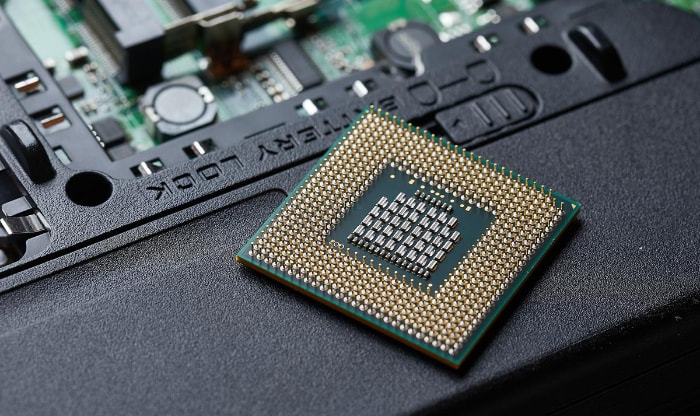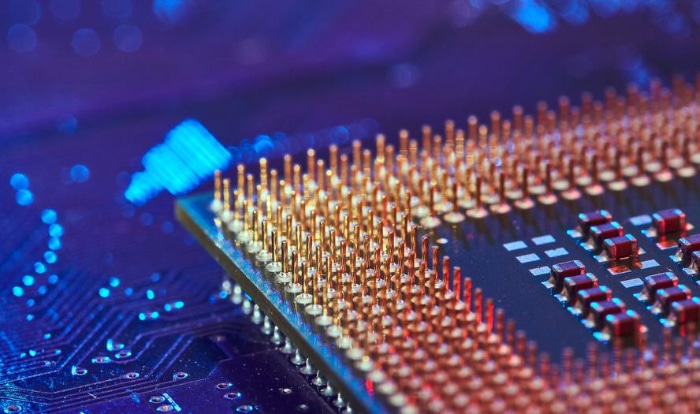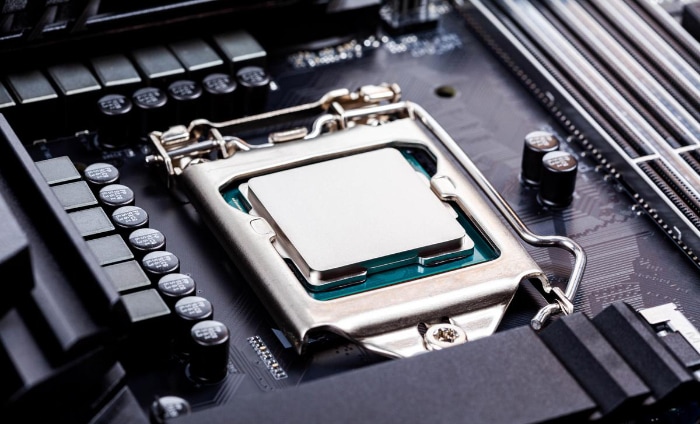6-Core vs 8-Core CPUs: Navigating Your Processor Choices

In the rapidly evolving world of computing technology, Central Processing Units (CPUs) remain the brain of every computer system. They are responsible for executing instructions from a computer’s hardware and software, essentially carrying out the tasks that enable us to use our devices. Within a CPU, there are subdivisions known as ‘cores’ which significantly impact the processing power and efficiency of a system.
To put it simply, cores are the individual processors within the CPU that read and execute program instructions. The more cores a CPU has, the more instructions it can handle simultaneously, leading to better performance especially when multi-tasking or running complex, resource-demanding software.
Two of the most commonly debated CPU configurations are 6-core and 8-core processors. They both provide significant advantages over their single and dual-core predecessors, yet they cater to different needs and use cases.
Understanding Multi-Core Processors
Multi-core processors are a significant innovation in computing technology that have fundamentally changed the way our computers operate. In the simplest terms, a multi-core processor is a CPU that has more than one core, or processing unit, contained within a single integrated circuit (IC).
Each core operates independently and can execute its own tasks simultaneously alongside the other cores. This design enables a multi-core processor to handle multiple instructions at once, effectively improving overall system performance.
Evolution From Single-Core to Multi-Core CPUs
Before the advent of multi-core processors, most computers used single-core CPUs. These CPUs could only execute one instruction at a time, meaning tasks were handled sequentially. However, as computing needs advanced and more complex software emerged, single-core CPUs started to reach their limits.
The solution was to develop CPUs with multiple cores. The first commercially available dual-core processor was introduced in the early 2000s.
This represented a leap forward in computing capability as it allowed for parallel processing, where multiple tasks could be processed simultaneously. Since then, the core count has continued to increase, leading to the 6-core and 8-core processors (and beyond) we see today.
Functionality and Benefits of Multi-Core Processors
A multi-core processor essentially divides computational tasks among different cores, allowing for efficient multitasking.
If a program is designed to take advantage of multi-core processing (known as multithreading), it can execute different parts of its code on different cores simultaneously. This parallel processing leads to faster execution times and more efficient system performance.
There are several benefits associated with multi-core processors:
Improved Performance: As discussed, multiple cores allow for simultaneous execution of instructions, drastically improving performance, particularly for software designed for multi-threaded processing.
Efficient Energy Use: Despite having multiple cores, these processors can actually be more energy-efficient. This is because each core can run at a lower clock speed while still achieving higher overall performance, which can reduce energy consumption and heat output.
Multitasking Capabilities: With more cores, you can run more applications at the same time without experiencing a drop in performance. This is particularly useful for users who tend to have many programs open simultaneously.
The Basics of 6-Core CPUs
A 6-core CPU, as the name suggests, contains six individual processing cores within a single integrated circuit. Each of these cores can process its own instruction stream independently of the others, allowing for parallel execution of multiple tasks.
This means that a 6-core CPU can theoretically handle six different tasks simultaneously, providing a significant performance boost over single or dual-core CPUs.
Typical Use Cases for 6-Core CPUs
The 6-core CPUs are generally well-suited to a variety of modern computing needs. They provide excellent performance for general computing tasks, such as browsing the web, streaming media, and using office applications. In addition, they are capable of handling more demanding tasks such as:
Gaming: Many of today’s PC games are designed to take advantage of multiple cores, making a 6-core CPU a solid choice for gamers.
Multimedia Editing: Software for editing photos, audio, and video can benefit from multiple cores, and 6-core CPUs can handle these tasks efficiently.
Multitasking: If you frequently have multiple applications open at once, a 6-core CPU can help keep everything running smoothly.
Pros and Cons of 6-Core CPUs

Pros:
Balanced Performance: A 6-core CPU strikes a balance between high performance and cost-effectiveness. It offers significant multitasking abilities and processing power without breaking the bank.
Energy Efficiency: Compared to higher-core-count CPUs, 6-core processors may consume less power and produce less heat, making them a good choice for systems where energy efficiency is a priority.
Cons:
Limited for High-End Tasks: While 6-core CPUs handle most tasks efficiently, they may not offer the same level of performance as 8-core CPUs (or higher) for very demanding applications, such as high-end video editing, 3D rendering, or running virtual machines.
Future Proofing: As software continues to evolve to take advantage of more cores, 6-core CPUs may not be as future-proof as CPUs with a higher core count.
The Basics of 8-Core CPUs
An 8-core CPU features eight individual processing cores, allowing it to theoretically process eight instruction streams simultaneously.
With these additional cores, 8-core CPUs offer enhanced processing power over 6-core CPUs, making them a more capable choice for running several high-performance applications at once or handling particularly resource-intensive tasks.
Typical Use Cases for 8-Core CPUs
While 8-core CPUs can capably handle all the tasks that 6-core CPUs can, they come into their own when used for certain demanding applications:
Advanced Gaming: Modern AAA games and high-refresh-rate gaming can take advantage of the additional cores in an 8-core CPU to deliver smoother and more responsive gameplay.
Professional Content Creation: Whether it’s video editing, 3D modeling, or other forms of high-resolution media creation, these tasks can significantly benefit from the increased processing power of an 8-core CPU.
Running Virtual Machines: If you need to run multiple operating systems simultaneously for testing or development purposes, the extra cores of an 8-core CPU can be extremely beneficial.
Heavy Multitasking: For users who need to run many high-demand applications simultaneously, an 8-core CPU can provide a smoother and more responsive experience.
Pros and Cons of 8-Core CPUs
Pros:
High-End Performance: 8-core CPUs deliver superior performance for intensive applications. Whether you’re a professional content creator, a serious gamer, or a power user, you’ll appreciate the additional processing power.
Future Proofing: As more software is developed to take advantage of multiple cores, an 8-core CPU is likely to stay relevant for a longer time than a 6-core CPU.
Cons:
Cost: 8-core CPUs are generally more expensive than their 6-core counterparts. If you don’t need the extra performance, this cost may not be justified.
Power Consumption and Heat: More cores can mean more power consumption and heat generation. You’ll need to ensure your system has adequate cooling and a power supply to match.
6-Core CPUs vs 8-Core CPUs: Performance Comparison

Comparing 6-core and 8-core CPUs requires us to consider various performance factors. While more cores can generally lead to improved performance, the actual difference experienced by the user can depend greatly on the specific tasks and applications they’re running.
General Computing Tasks
For everyday computing tasks such as web browsing, media streaming, and office applications, both 6-core and 8-core CPUs will deliver excellent performance. The majority of these tasks don’t require the full processing power these CPUs offer, so the difference in performance between them for these uses is likely to be negligible.
Gaming Performance
In gaming, the performance difference between 6-core and 8-core CPUs can vary depending on the game in question. Many modern games can take advantage of multiple cores, but they might not fully utilize all eight cores.
As such, a 6-core CPU can often deliver similar gaming performance to an 8-core CPU. However, for high-end, demanding games or those optimized for high core count, an 8-core CPU may provide a noticeable advantage, especially when paired with a powerful graphics card.
Multimedia Editing and Professional Software Performance
This is where 8-core CPUs often shine. Software for video editing, 3D modeling, and other high-resolution content creation can often take full advantage of the additional cores in an 8-core CPU, leading to significantly faster render times and smoother performance during editing.
If your work involves these types of demanding applications, an 8-core CPU is likely to be the better choice.
Multitasking Performance
When it comes to running multiple applications simultaneously, both 6-core and 8-core CPUs offer excellent multitasking performance.
However, the extra cores in an 8-core CPU can help maintain system responsiveness, especially when running multiple demanding applications at once. If you often find yourself needing to run many high-performance applications simultaneously, an 8-core CPU can be worth the extra investment.
Heat Generation and Power Consumption
More cores often mean more heat and higher power consumption. Under full load, an 8-core CPU is likely to generate more heat and consume more power than a 6-core CPU. This means you’ll need to consider your system’s cooling capabilities and power supply when deciding between these options.
Real-World Application: Which One is Right for You?
Deciding between a 6-core and an 8-core CPU largely depends on your personal computing needs, budget, and future-proofing considerations. Below, we discuss various user profiles and which CPU might be the best fit for each.
Casual Users and Students
For those who primarily use their computers for basic tasks like browsing the internet, streaming videos, using office applications, and studying, a 6-core CPU should be more than enough. These tasks do not heavily rely on multiple cores, so the additional cost and power consumption of an 8-core CPU might not be justified.
Gamers
The right choice for gamers can depend on the types of games you play and your performance expectations. For most games, a 6-core CPU will offer excellent performance.
However, if you play high-end, resource-intensive games, aim for high-refresh-rate gaming, or want to future-proof your system for upcoming game titles, an 8-core CPU might be worth the investment.
Content Creators and Multimedia Professionals
If you’re into video editing, 3D rendering, high-resolution graphic design, music production, or any other demanding multimedia work, the additional cores of an 8-core CPU can significantly improve your experience.
Faster render times and smoother editing performance can make your work process more efficient and enjoyable.
Power Users and IT Professionals
If you’re a power user who tends to run many high-performance applications simultaneously, or an IT professional running virtual machines or developing software, an 8-core CPU is likely to be beneficial. The extra cores can provide a smoother and more responsive experience when multitasking under heavy load.
Future-Proofing Considerations
As software continues to evolve and make better use of multiple cores, choosing an 8-core CPU can be a way of future-proofing your system. While a 6-core CPU may handle your needs today, an 8-core CPU is more likely to keep up with the increasing demands of future software.
Remember, while the number of cores is an important consideration, it’s not the only factor that affects CPU performance.
Clock speed, architecture, cache size, and other features also play crucial roles. It’s important to consider all of these factors, along with your budget and specific needs, when choosing a CPU.
Future Trends: Beyond 8 Cores

As we explore further into the future of CPU development, it’s clear that we’re not stopping at 8 cores. The boundaries are continuously being pushed, and multi-core CPUs with even higher core counts are already a reality.
Emergence of High-Core-Count CPUs
High-core-count CPUs, such as 12-core, 16-core, and even up to 64-core processors, have already entered the market, primarily targeted towards high-end professional use and server applications.
These CPUs deliver extraordinary performance for specific tasks, particularly those that are highly parallelizable and can take advantage of many cores simultaneously.
Demands of Modern Software and Applications
The shift towards higher core counts is driven partly by the demands of modern software and applications.
High-resolution media editing, complex simulations, scientific computing, server applications, and even some high-end games are beginning to benefit from CPUs with more than eight cores. As software continues to evolve, we can expect the demand for high-core-count CPUs to increase.
Barriers to Higher Core Counts
However, increasing the core count is not without challenges. Adding more cores leads to higher power consumption and heat generation, necessitating more advanced cooling solutions and more efficient power supplies.
There’s also the issue of diminishing returns – not all tasks can effectively use many cores simultaneously, so there’s a limit to how much real-world performance can be gained by simply adding more cores.
The Balance of Cores and Clock Speed
One trend in CPU design is to balance the number of cores with clock speed (the speed at which each core operates). High-core-count CPUs often have lower base clock speeds to manage heat and power consumption.
This means that for tasks which can’t use many cores simultaneously, a CPU with fewer cores but a higher clock speed might actually deliver better performance.
Looking Forward
Despite these challenges, the trend towards higher core counts is likely to continue. Advances in chip design and manufacturing technology, as well as developments in software that can better utilize multiple cores, will drive this progression.
It’s an exciting time to be involved in the world of computing, and we look forward to seeing what the future holds.
Conclusion: Navigating Your CPU Choices
Selecting the right CPU for your needs involves careful consideration of many factors, including core count. As we’ve explored in this article, both 6-core and 8-core CPUs bring substantial processing power that caters to a wide range of computing needs.
A 6-core CPU offers a balance of performance and cost-effectiveness, making it a suitable choice for general computing tasks, gaming, and medium-intensity multimedia editing.
On the other hand, an 8-core CPU provides high-end performance that excels in advanced gaming, professional content creation, heavy multitasking, and running virtual machines. It also presents a more future-proof option as software continues to evolve to make better use of multiple cores.
However, core count is not the only factor that determines CPU performance. Other considerations such as clock speed, architecture, cache size, power consumption, and of course, your budget, also play significant roles in your decision-making process.
Looking forward, the trend towards higher core counts is poised to continue, driven by the demands of modern software and advances in chip design. As we move into this future, the considerations around core count will continue to evolve, but the principles remain the same: understanding your own computing needs is the key to making the right choice.
Whether you opt for a 6-core CPU, an 8-core CPU, or even a CPU with a higher core count, the most important thing is that it fits your needs and provides the best possible computing experience for you.
After all, the true power of technology lies not in its specifications, but in its ability to empower you to do what you want to do, as efficiently and enjoyably as possible.


